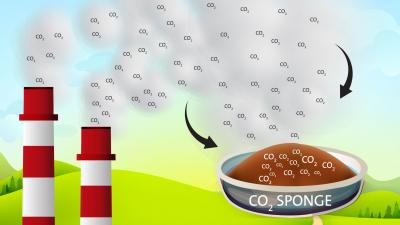Super sponge soaks up old energy issues
A spongy plastic that soaks up carbon dioxide could ease the transition away from polluting fossil fuels and toward new energy sources, researchers say.
The new material — a relative of the plastics used in food containers — could be integrated into power plant smokestacks to drastically improve the quality and reduce the harmfulness of their emissions.
“The key point is that this polymer is stable, it's cheap, and it adsorbs CO2 extremely well. It's geared toward function in a real-world environment,” says US engineer Andrew Cooper, PhD.
 “In a future landscape where fuel-cell technology is used, this adsorbent could work toward zero-emission technology.”
“In a future landscape where fuel-cell technology is used, this adsorbent could work toward zero-emission technology.”
A report on the material will be launched at the upcoming 248th National Meeting & Exposition of the American Chemical Society (ACS).
Similar adsorbents are already commonly used to remove some pollutants from the smokestacks at power plants, but researchers have bigger plans for their latest sponge.
The new material would be a part of an emerging technology called an integrated gasification combined cycle (IGCC), which can convert fossil fuels into hydrogen gas.
Hydrogen holds great promise for use in fuel-cell cars and electricity generation because it produces almost no pollution.
IGCC is a bridging technology that is intended to jump-start the use of hydrogen, or the transition to hydrogen fuel, while still using the existing fossil-fuel infrastructure.
One advantage of using polymers is that they tend to be very stable. The material can even withstand being boiled in acid, proving it should tolerate the harsh conditions in power plants where CO2 adsorbents are needed.
Other CO2 scrubbers — whether made from plastics or metals or in liquid form — do not always hold up as well.
Another advantage of the new adsorbent is its ability to take in CO2 without also taking on water vapour, which can clog up other materials and make them less effective.
Its low cost and reusability also makes the sponge polymer attractive. "
Dr Cooper will make a presentation this week to describe ways to adapt his microporous polymer for use in smokestacks and other exhaust streams.








 Print
Print